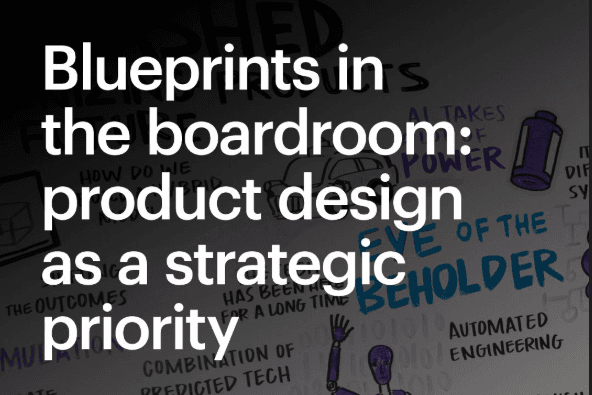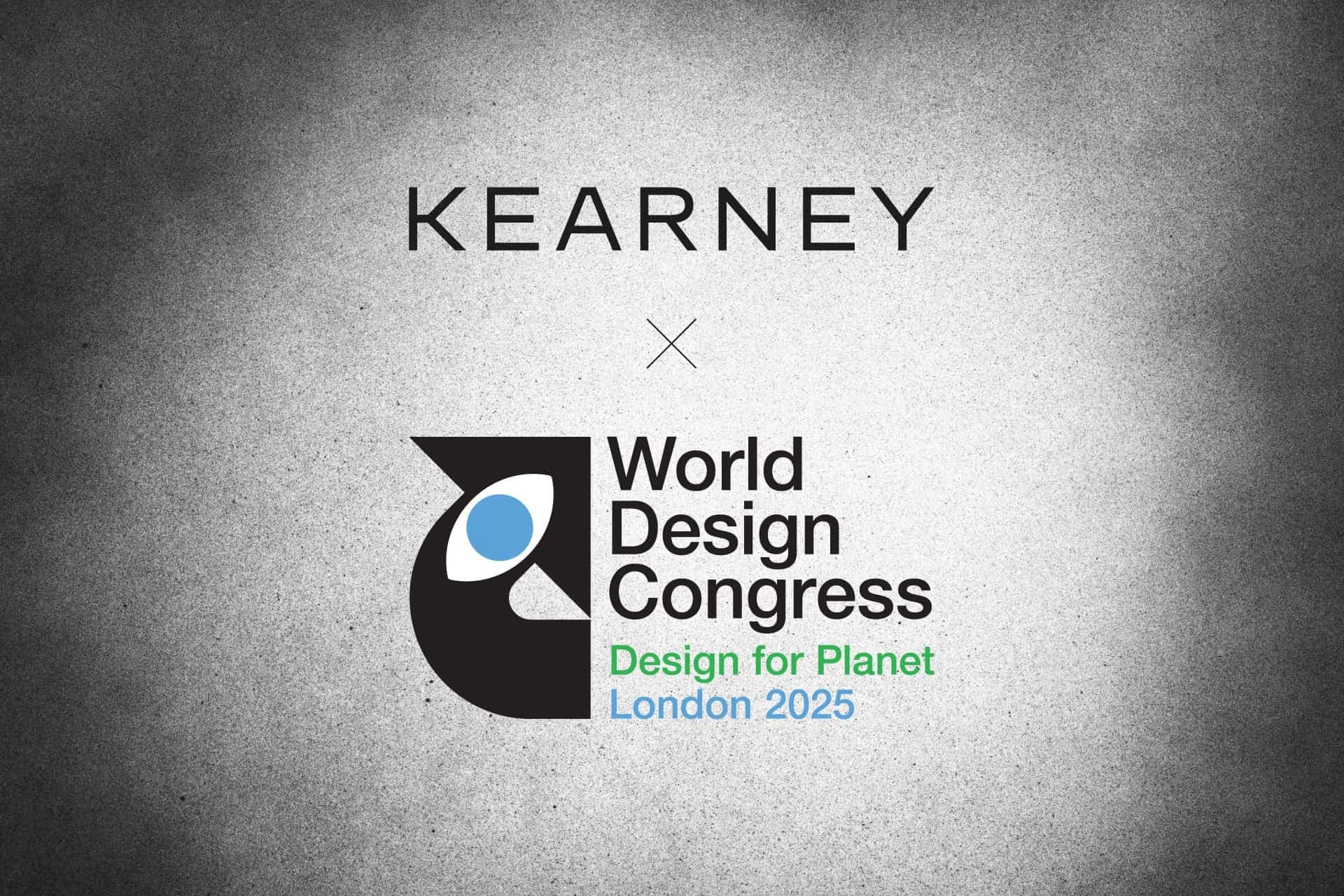“Simplicity is the ultimate sophistication.” This quote, attributed to Leonardo Da Vinci, is relevant now more than ever. True mastery and elegance in any form of design can be achieved by prioritizing simplicity, stripping away any unnecessary complexity to reveal the purest form of functionality and beauty.
However, in the industrialized state of mass production, product design has taken on a wide range of complexities as consumers’ needs, technology, and production capabilities have evolved. Over the past few decades, product design has come a long way—from a craft practiced in secluded studios to a strategic boardroom priority. In fact, it now encompasses much more than products.
Product design can impact how companies organize, innovate, and interact with their customers, solving some of the world’s most pressing challenges. This evolution is not merely about aesthetics or functionality. It’s about reshaping corporate strategy and steering companies toward unparalleled competitive advantages.
The evolving universe of product design
Innovative product designs have long enabled companies to create memorable products and stay ahead of the competition. Today, technological advancements such as AI, IoT, and 3D printing, along with user-centric approaches and sustainability initiatives, are accelerating this innovation. Cross-disciplinary collaboration fosters creativity, while data analytics aligns product design with consumer needs and expectations.
For instance, the story of Amar Bose, founder of Bose Corporation, epitomizes the transformative impact of innovative design. A researcher and professor at MIT, Bose fused his genius for engineering with a deep understanding of customer needs. He encouraged his employees to “dream and reach” to create products that not only met but anticipated consumer desires, as noted by Raza Haider, chief supply chain and product officer at Bose Corporation. However, today’s landscape requires bringing creativity to life as fast as possible with rapid prototyping and timely delivery to meet market demands and stay ahead of the competition.
Jim Wicks, a seasoned designer and now director and clinical professor for product design at Northwestern University, reflects on this evolution: “Design has moved from being a craft to encompassing systems and services,” he explains. “Fifteen to 20 years ago, design was about designers having great antennas, going out into the world.” Today, he says, it’s about creating comprehensive experiences that engage users on multiple levels.
Circular product design thinking: more than a buzzword
In today’s competitive landscape, fueling innovation and solving problems across industries requires a robust circular end-to-end approach to product design thinking. Circularity considers the end stage of a product from the very beginning so that you can also design how the product is reused, recycled, or disposed of. Amy Bonsall, founder and CEO of Collective, underscores the transformative potential of circularity to address the most pressing challenges of making successful products and organizations. However, there’s a misconception that design thinking is a static “formulaic” solution, as observed by Wicks. Rather, it is a dynamic approach that requires continuous adaptation and empathy. Applied to a product, right from conceptualization to its recovery, design thinking can help companies tackle multiple challenges at once and ultimately create products that are good for the company, the consumer, and the world. And when applied to an organization, design thinking can help create a company that’s better set up to truly serve its customers, its employees, and its other stakeholders.
Balancing AI and sustainability
The intersection of technology and sustainability presents both opportunities and challenges for product design. Integrating AI holds immense promise for transformative innovation, yet it necessitates a critical reevaluation of environmental impact and resource consumption. Integrating AI into product design processes will enable companies to boost their efficiency and reduce their ecological footprints, aligning technological progress with sustainable practices.
“Designing for sustainability is no longer a good-to-have but a must-have methodology as companies continue to build products,” says Daniel Newman, CEO of The Futurum Group. “As we tend to use more AI technologies for software or hardware products, the amount of power consumed is also doubling annually on the grid.” Manoj Leelanivas, COO at Juniper Networks, reinforces this perspective: “We cannot do design without thinking about the planet.” By integrating an end-to-end sustainable product design approach powered with technology, companies can develop products that are designed for long-term success while minimizing the environmental impact.
Bridging organizational silos
Organizational silos and bureaucratic hurdles are long known to obstruct cross-functional collaboration and limit the pace of innovation. However, companies that foster a culture of agility, promote cross-functional collaboration throughout product design and development, and embrace a customer-centric approach can navigate the complexities with ease, emerging as exemplars of innovation and collaboration. Industry leaders agree that a comprehensive approach to design and innovation is achievable only through strong cross-functional teams.
“There is a true north which is delighting customers,” Leelanivas said. “You need to have that common goal that aligns the entire organization. That’s how to get past these silos: by pointing them to the true north.” Encouraging open communication and collaboration allows companies to harness diverse perspectives and expertise, leading to more comprehensive and effective solutions. Such an approach not only enhances product design but also improves overall organizational efficiency and adaptability.
Real-time innovation and customer-centricity
More than 30,000 new consumer products are launched every year, according to Harvard Business School. However, only 40 percent actually reach the market, and among those that do, only 60 percent generate revenue. Two of the main reasons that new products fail are a lack of preparation and a lack of understanding what consumers need. These statistics reinforce that in today’s fast-paced environment, real-time innovation and customer-centricity are paramount. Leading companies prioritize continuous iteration, with rapid prototyping and adapting based on what consumers think and say about the product. By prioritizing users’ needs and preferences, organizations can forge deeper connections with their audience, creating loyalty and building long-term success in an evolving marketplace.
A customer-centric approach ensures that products and services remain relevant and valuable, addressing real-world problems and enhancing user experiences as consumer demands evolve. By understanding and analyzing customer data and feedback, companies can make informed decisions that align with customer expectations and market trends, fostering innovation that resonates with their target audience.
The future of design: human–machine interactions
As design continues to evolve, the future holds exciting possibilities, particularly in human–machine interactions. Industry leaders envision a future where design seamlessly integrates with emerging technologies such as AI, enriching human experiences, and fostering unprecedented levels of both engagement and utility.
Product designers that explore the potential of human–machine interactions can create intuitive, immersive experiences that enhance everyday life. This integration of technology and design will not only improve functionality but also drive innovation in user interfaces, accessibility, and overall satisfaction. The future of design promises to be a harmonious blend of human creativity and technological advancement.
The ascent of product design to boardroom prominence signifies a fundamental shift in corporate strategy. Product design is no longer a peripheral activity, but rather a core strategic function. As companies continue to harness the power of design, they will not only shape the products of tomorrow but also redefine the future of business itself.
This panel discussion took place at our Future of Product event in Chicago, and featured Raza Haider (Bose Corporation’s chief product and supply chain officer), Daniel Newman (The Futurum Group CEO), Manoj Leelanivas (Juniper Networks COO), Jim Wicks (Northwestern University director and clinical professor), and Amy Bonsall (founder and CEO of Collective).



